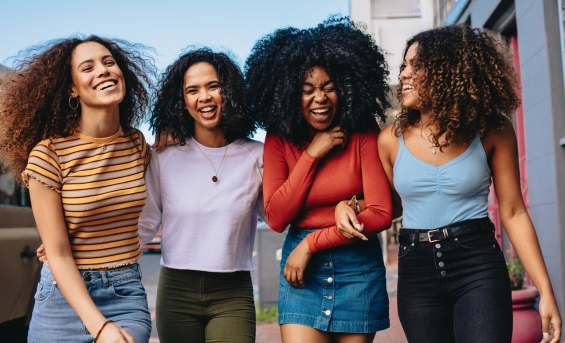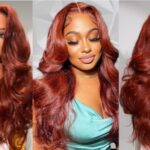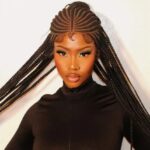Hair played a significant role in the culture of ancient African civilizations. It symbolized one’s family background, social status, spirituality, tribe, and marital status. African women often have a rich history of embracing a wide variety of hairstyles that reflect their cultural heritage, personal style, and creative expression.
Majority of African hair is naturally curly or coily. However, it’s important to acknowledge that hair textures vary widely within the African diaspora. Understanding these textures is essential for embracing the beauty of natural hair. In this article, we’ll delve into five common types of African hair textures, each with its distinct characteristics and charm.
Straight Hair
While curly and coily hair is more prevalent, some individuals of African descent do have naturally straight or wavy hair. Straight hair is characterized by its minimal curl pattern, often lying flat against the scalp.
While it’s less common among individuals of African descent, it’s important to acknowledge its presence within the spectrum of hair textures. Straight hair is known for its sleek appearance and is typically associated with smoothness.
It’s worth noting that even within the straight hair category, there can be variations or subtypes that exhibit slight deviations in texture or thickness.
For those with straight hair, experimenting with subtle waves using styling tools can add texture and depth. Embrace the versatility of straight hair by occasionally adding loose, beachy waves for an effortless yet sophisticated touch.
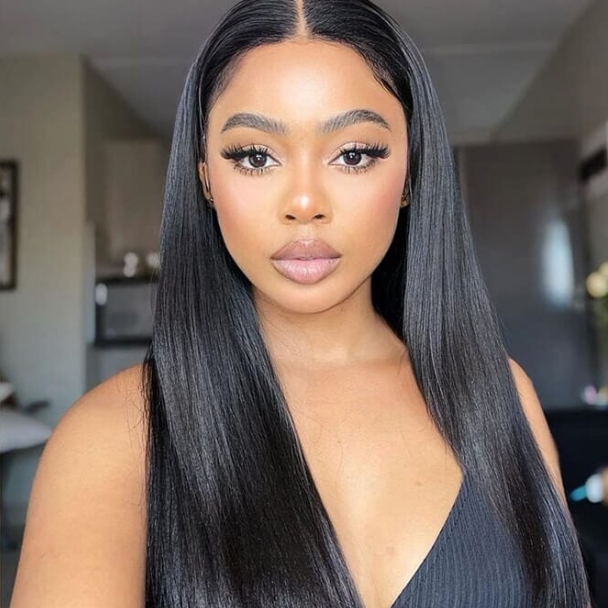
Wavy Hair
Wavy hair showcases elegant curves that form a gentle S-shape pattern. This texture is an intermediary between straight and curly, blending elements of both to create a versatile and visually appealing look.
Wavy hair offers flexibility in styling, allowing individuals to enhance or loosen their natural waves. The degree of waviness can vary, with some individuals having subtle waves while others display more prominent patterns.
Make your waves stand out by gently tousling in lightweight styling products. This helps define your waves and gives them more shape. If you’re looking for a different style, you can also flatten out your waves for a sleek and polished appearance.
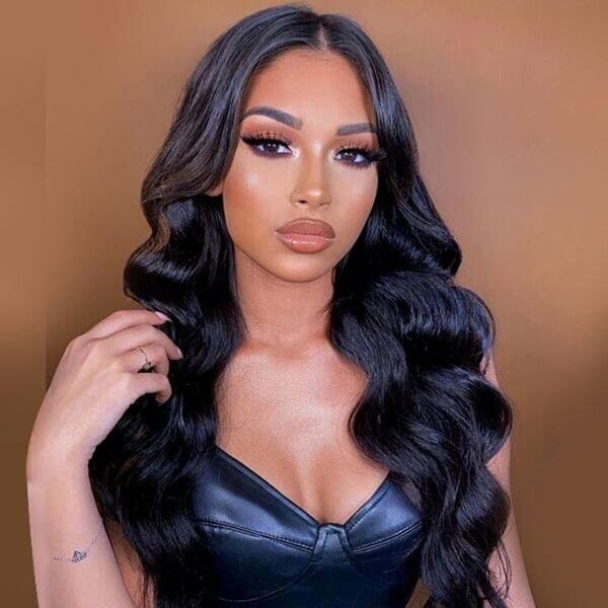
Curly Hair
Another very common African Hair type is Curly Hair. Curly hair are known for its well-defined curls ranging from loose to tight, radiates vibrancy and playfulness in every coil.
Curly hair can be further divided based on the intensity of the curl pattern, with some individuals possessing looser curls that resemble beach waves, while others showcase tighter, spring-like curls.
If you like curly hair and also want a shorter hairstyle, using a bob wig can be really cool. Just imagine the mix of bouncy curls with the stylishness of a bob wig. You can pick a bob wig with loose curls for a casual look or one with tighter curls for a more defined style.
This combo of curls and bob wigs gives you a special way to style your hair. It’s like blending classic curly hair with the trendy vibe of bob wigs, making your curly hairstyle feel modern and classy at the same time.
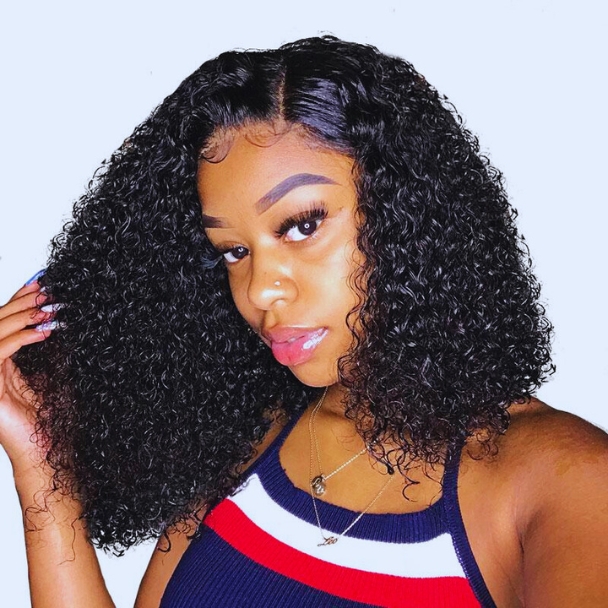
Coily Hair
Coily hair is a very common and natural texture among African, African-American and African-descendant individuals. Coily hair is often referred to as type 4 hair in the hair typing system, and it includes a range of tight and closely packed coils that create intricate patterns. This hair texture is a prominent and beautiful feature in many African communities and is celebrated for its uniqueness and versatility.
Coily hair comes in various patterns, from “s-curls” to “z-pattern coils,” and it can vary in density, curl size, and overall appearance. Many African ladies and individuals of African descent have coily hair, and it’s an essential part of the diverse spectrum of natural hair textures found within these communities.
Coily hair holds cultural significance and has a rich history within African and African-American culture. It’s often styled in a variety of creative ways, such as braids, twists, locs, and intricate updos, reflecting both personal style and cultural heritage.
Kinky Hair
Kinky hair is also a very common and natural texture among African and African-descendant individuals. Kinky hair is often used interchangeably with coily hair, particularly within the context of the hair typing system. It falls under type 4 hair, which encompasses a range of textures with tight coils and curls.
Kinky hair is characterized by its tightly coiled and zigzag-like patterns. These patterns create a unique and captivating texture that is distinct and beautiful. Like coily hair, kinky hair varies in density, curl size, and overall appearance. It’s a significant and celebrated feature within African communities and is a symbol of cultural identity and pride.
Like Coily hair, kinky hair holds significant cultural importance both in Africa and among African diasporic communities in America and around the world. Kinky hair is often styled in various ways, including natural styles like afros and protective styles like braids and twists. It’s a representation of the diverse range of natural hair textures within the African and African-American community.
Styling and Care Tips For Different Hair Type
Black women often have a wider range of natural hair textures, each with its unique beauty. Yet, this diversity can present challenges in daily management. To ensure proper styling and care, the first step is understanding your hair type among the five common textures discussed earlier.
If you have curly hair, embrace its bounce and vibrancy. Enhance definition by applying curl-enhancing products and scrunching with a microfiber towel.
Kinky hair thrives on moisture. Deep conditioning and leave-in treatments are your allies. Embrace protective styles that tuck your ends away, safeguarding against breakage.
Coily hair loves hydration and gentle detangling. Twist-outs or braid-outs can showcase your coils while maintaining manageability.
Wavy hair craves volume and definition. Use lightweight styling products to accentuate your waves without weighing them down.
Straight hair might lean toward oiliness. Opt for sulfate-free shampoos to maintain balance, and explore volumizing styling techniques.
Once you’ve identified your texture, you can tailor your routine to enhance its health and appearance. You also need to take into account the following points regardless of your hair type.
Moisture and Cleansing:
- Begin with a gentle sulfate-free shampoo or co-washing routine, depending on your texture’s needs.
- Keep your hair hydrated by using leave-in conditioners, natural oils, or moisturizing creams that cater to your texture.
Embrace Protective Styling:
- Regardless of your hair’s texture, protective styles like braids, twists, and updos offer benefits.
- These styles minimize manipulation, reducing stress on your hair and promoting its overall health.
Nurture While You Sleep:
- Incorporate a nighttime routine that helps retain moisture. Use silk or satin pillowcases or headscarves to minimize friction.
- Ensuring your hair is well-maintained during sleep contributes to its vitality.
Remember, understanding your hair type is the foundation for effective styling and care. By recognizing the nuances of your texture, you can implement a personalized routine that celebrates the beauty of your natural hair.
Incorporating Wigs for Versatility
Black women and specially African American women have embraced wigs as a powerful tool for expressing their style and personality. Wigs offer a world of versatility beyond your natural texture, allowing you to transform your look effortlessly. Consider these points:
- Quick Style Changes: Wigs offer the flexibility to switch between different hair textures and colors without any commitment.
- Protective Styling: Wearing wigs can also serve as a protective styling option, giving your natural hair a break from manipulation.
- Convenience: Enjoy the convenience of a ready-to-wear hairstyle, saving you time and effort in your daily routine.
Glueless lace front wigs have become increasingly popular in recent years. They offer a combination of convenience, natural appearance, and versatility that appeals to many individuals, including Black women and those within the broader beauty and fashion community.
Final Words
In the end, African hair comes in so many different textures, each with its own story of culture and identity. From the cool coils of coily hair to the awesome twists of kinky hair, every texture is special and meaningful. The way we have worn our hair has a big history, showing how we have been strong and proud over time.
Understanding these textures isn’t just about how things look. It’s about knowing where we come from and being proud of it. How we do our hair is like saying “I’m special” in a really cool way. And while we make our hair look nice with styles and care, we also remember our history and our roots.
In a world where people talk about what’s pretty, knowing who we are never goes out of style. This article has been here to show you all kinds of hair and how to take care of it. So as you go on your journey with your hair, remember that every curl, twist, wave, and kink is like a mark of who you are, a sign of your own special kind of beauty.
